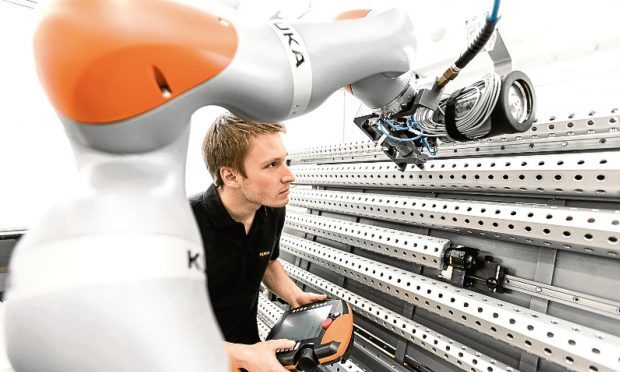The rise of robots could lead to thousands of jobs being lost in Aberdeen over the next 12 years – but a new study has said that the city is better placed than others to cope.
The Cities Outlook 2018 report, produced by the Centre for Cities think-tank, found that 3.6million jobs could vanish in Britain as a result of automation by 2030.
Of the 230,000 jobs said to be at risk in cities in Scotland, around 112,700 were in Glasgow, 60,800 in Edinburgh, 35,900 in Aberdeen, and 20,000 in Dundee.
Compared with 25.3% in Dundee, however, the 19.3%, proportion of jobs in jeopardy in Aberdeen was at the lower end of the scale, and more than a third of them were said to be “plant and machine operatives”.
And the Granite City also boasted the second highest proportion of high-skill private sector jobs which were “likely to grow” between now and 2030, behind only Cambridge.
Andrew Carter, chief executive of the Centre for Cities, said: “Automation and globalisation will bring huge opportunities to increase prosperity and jobs, but there is also a real risk that many people and places will lose out.
“The time to act is now – national and local leaders need to ensure that people in cities across the north and midlands can share in the benefits these changes could offer.”
Aberdeen featured prominently in a range of economic data used in the report, both negative and positive, including standing out as the only UK city which declined in population between 2015 and 2016.
